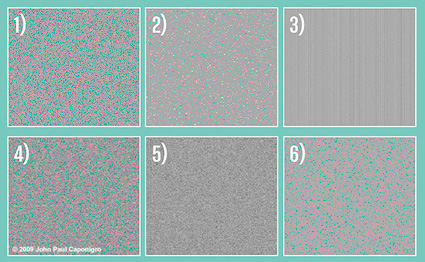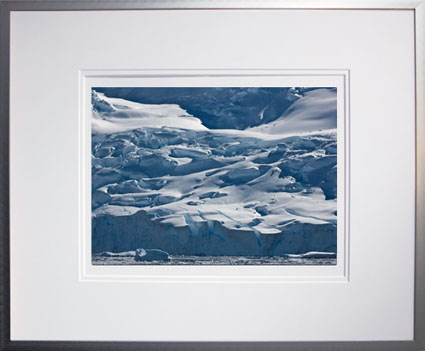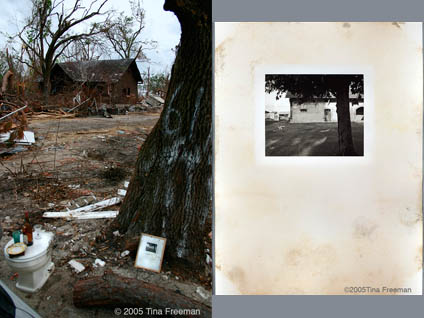Patti Maes and Pranav Mistry Demo SixthSense
This makes Minority Report look tame.
They say we’ll have something like this inside ten years.
I’d guess sooner.
The way we access and interact with information is changing rapidly.
Extraordinary!
This makes Minority Report look tame.
They say we’ll have something like this inside ten years.
I’d guess sooner.
The way we access and interact with information is changing rapidly.
Extraordinary!
Recently at B&H I spoke on Creativity.
Now you can enjoy my lecture online here and at B&H.
Get a good cup of coffee, pen and paper to help you catch all the good ideas that come to mind as you watch it.
Check out B&H for more inspiring lectures.
Find my DVDs here.
Download my free Creativity ebooks here.
Learn more in my Workshops.

Noise comes in three types or patterns:
1) Random noise 2) Fixed-pattern noise 3) Banding noise
Noise often has two components—brightness and color:
4) Image noise 5) Luminance noise 6) Chrominance noise
Knowing the type and kind of noise produced will help guide you to solutions to reduce it. There are three types of noise: random noise, fixed-pattern noise and banding noise.

Find out what Bambi Cantrell, John Paul Caponigro, Douglas Dubler, Greg Gorman, Jay Maisel, Steve McCurry, and Jeff Schewe have to say about the Epson Stylus Pro 900 Series printers. You’ll hear personal stories and real world case studies of how these printers are making the best prints possible.
View these seven new videos here.
By the way, the videos were produced by Epson’s Dan Steinhardt and the same team that produces Acme Educational DVDs – Vincent Versace and Mark Vanocur,
Learn more in my free downloadable Lessons.
Learn even more in my Fine Art Digital Printing Workshops.
Stay tuned for the release of my new DVDs Fine Art Digital Printing.


What do people look for in fine art photographic prints?
One of the most important things we look for is …
Detail.
What kind of detail?
At least five kinds.
Detail – Focus
Detail – Dynamic Range
Detail – Gradation
Detail – Low Signal to Noise Ratio
Detail – Flawless Surfaces
There’s are many exceptions to this rule of thumb but they are exceptions.
The best exceptions depart from the standards meaningfully.
It helps to know what to look for in fine art photographs.
Find out more in my free downloadable Lessons.
Find out more in my Fine Art Digital Printing Workshops.
Stay tuned for the announcement of my Fine Art Digital Printing DVD.

I lecture tonight at 7pm in Milwaukie at CoPA.
I’ll discuss my creative process and new work from my project Antarctica.
The lecture is free and open to the public thanks to Canon.

Inkjet prints survived floods where silver gelatin prints didn’t.
It’s one of the worst situations. Your life’s work is immersed under water. Tina Freeman found herself in that situation. She was amazed to find that many inkjet prints had survived where many silver gelatin prints had not.
“This is the print and where it was found after Katrina. I also found another print three months after finding this one, it was in the same shape. You’ll see a scan of the Piezotone print that survived 20 feet of salt water and three months in the blazing southern sun. This print was framed and you can see the mark that the mat made but the print area is pristine and exactly matches the image before the storm. In the other image you will see the site of the house where the image was found – the house that the print was in was completely demolished, this house was next door. These prints, two of about fifteen found, showed no evidence of fading! These prints are tough- no silver print would have survived this trial in tact, we didn’t find any more but they may have been buried beneath the rubble of the house which was about 150 yards northeast of the original site. The print was printed on Hanemühle Photo Rag the Piezotone pigment was Museum Black.”
Don’t try this at home – except under the most controlled situations.
Do rest assured, your pigmented inkjet prints are more durable than you think.
Find out more about Tina Freeman here.
Find out more about digital printing and my digital printing workshops here.